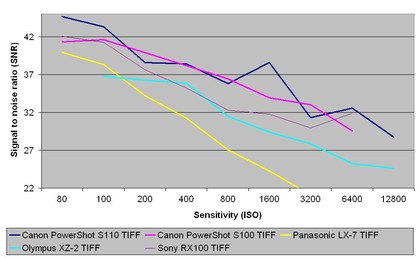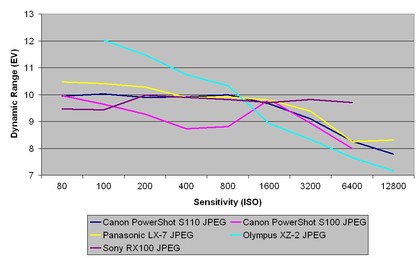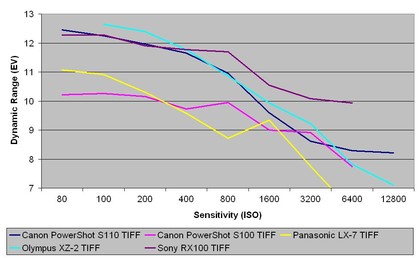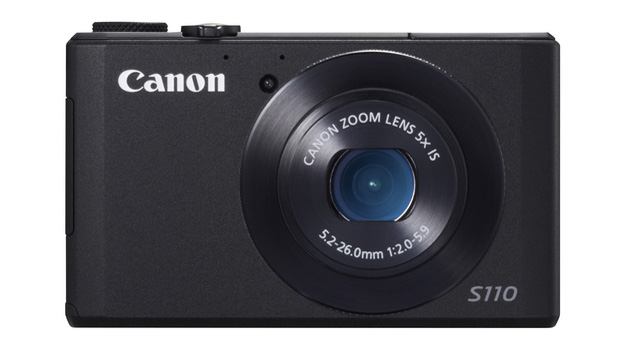Why you can trust TechRadar
We shoot a specially designed chart in carefully controlled conditions and the resulting images are analysed using DXO Analyzer software to generate the data to produce the graphs below.
A high signal to noise ratio (SNR) indicates a cleaner and better quality image.
For more more details on how to interpret our test data, check out our full explanation of our noise and dynamic range tests.
Here we compare the Canon PowerShot S110 HS with the Panasonic LX7, Sony RX100, Canon PowerShot S100 and Olympus XZ-2.
JPEG signal to noise ratio

These results show that the Canon S110's JPEG files have a strong signal to noise ratio, sitting in the top three performers alongside the Canon S100 and Sony RX100 in the low to mid sensitivities, before its ratio falls after ISO 1600, to eventually fall below the results of the Panasonic LX7 and Olympus XZ-2at the top of the range.
Raw signal to noise ratio

The signal to noise ratios of the TIFF images (after conversion from raw) from the Canon PowerShot S110 HS are higher than those from the JPEG images, this time putting the Canon S110 top of the pack on several occasions, beating the Canon S100 sometimes, but sometimes falling behind it. The Canon S110's raw images beat those from the Panasonic LX7, Sony RX100, and Olympus XZ-2 at every sensitivity setting.
JPEG dynamic range

JPEG results for dynamic range are less impressive than those for signal to noise ratio, with the Canon S110 sitting in the middle to bottom of the pack compared to the other cameras tested here. It beat older brother the Canon S100 at almost every ISO setting, and beats the Sony RX100 at low sensitivities and the Olympus XZ-2 at the top end of the ISO range. The Panasonic LX7 beats the Canon S110 at most settings, but produces very similar results from ISO 400 upwards.
Sign up for breaking news, reviews, opinion, top tech deals, and more.
Raw dynamic range

This chart indicates that TIFF images (after conversion from raw) from the Canon S110 have stronger dynamic range than JPEGs, beating the Panasonic LX7 throughout the sensitivity range and beating theCanon S100 at every setting but ISO 3200. It produces almost identical results to the Sony RX100 at lower sensitivities, before falling behind at ISO 400 and above. The Olympus XZ-2 starts off strongest, then falls slightly behind the Canon S110 in the mid-range, then gets ahead again, before finishing behind again at the top of the ISO scale.
